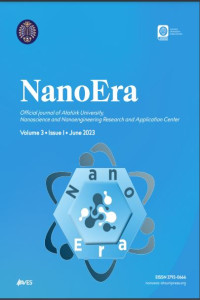Excitation-Dependent and pH-Sensitive Fluorescence Emission of Carbon Quantum Dots from Whey as Precursor
Abstract
Fluorescent carbon nanoparticles or carbon quantum dots, a novel type of nanomaterials, have been introduced with their unique chemical, optical, and biological properties. Due to their high biocompatibility and non-toxicity, low cost, and unique emission properties, carbon quantum dots have become the focus of attention in nanotechnology in a short time. Thanks to these features, they provide opportunities for use in many fields such as biotechnology, bioimaging, drug release, biosensors, photocatalysis, and, solar cells. In addition to these advantages, they may offer excitation wavelength-dependent properties and the pH-sensitive photoluminescence mechanism. In this study, we present a simple yet environmentally friendly method to produce carbon quantum dots from whey, an important dairy waste. For this, carbon quantum dots were synthesized by hydrothermal synthesis using whey as the precursor for 24 hours at 220°C. The fabricated carbon quantum dots exhibited a bluish-white emission under ultraviolet light with an excitation-dependent property. Also, as the pH value increased, the fluorescence activity decreased accordingly without any remarkable shift in absorption maxima indicating the potential application of carbon quantum dots as pH sensors in various chemical and biological systems.
Abstract
Details
| Primary Language | English |
|---|---|
| Subjects | Micro and Nanosystems, Nanomanufacturing |
| Journal Section | Research Articles |
| Authors | |
| Publication Date | June 23, 2023 |
| Submission Date | April 25, 2023 |
| Published in Issue | Year 2023 Volume: 3 Issue: 1 |
Content of this journal is licensed under a Creative Commons Attribution-NonCommercial-NoDerivatives 4.0 International License.

